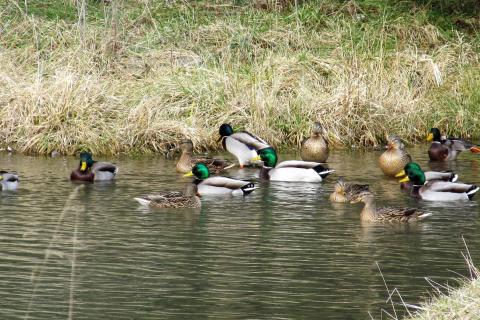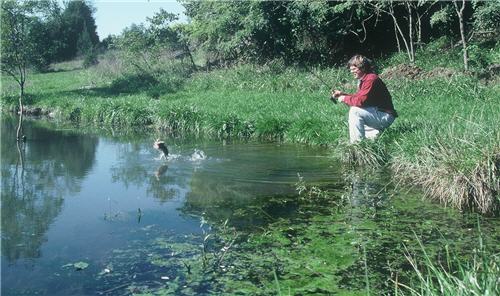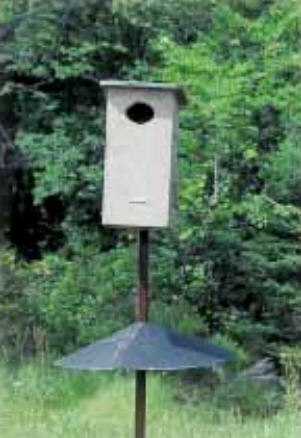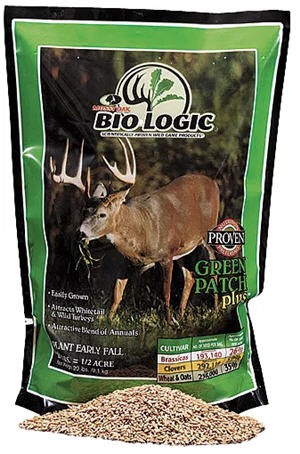
Chances are if you’re an outdoorsman and live on or own an acre or more of land, you’ve probably had the thought: why not build a pond? You could hunt ducks and geese on it in fall. It would attract and hold whitetail deer. And the pond would be a private fishing lake that you could fish and manage as you please--an angling spot that would never be crowded.
In this article we will delve into some of the many attractions and benefits of having your own pond and the basic considerations to keep in mind when creating your private fishing hole. Plus, we'll examine the potential problems and pitfalls in creating a fishing and hunting pond.
Don't Think of Private Ponds as Just a Fishing Spot

fishing and hunting. You can manage your pond exactly as you like
catch and release, harvest a few smaller bass, whatever you choose to make the fishing high quality. And you won’t have to wait in line at boat ramps!
They are so much more than that. Ponds can be just as gratifying for the wildlife they attract that you can enjoy photographing, watching, and hunting. Having a pond to both hunt and observe waterfowl raise young on is a balm for the soul. Private fishing ponds provide recreational and a family gathering spot.
Tip: For the more practical-minded: ponds almost always substantially increase the value of a property. They often increase it far more than the cost of the construction and allow use of wet areas that can’t be farmed or used for food plots.
Ponds Create a Refuge for Wildlife

Black IR Game Camera
Visions of hunting ducks and geese may fill your mind when you start planning your pond. Once it’s been built, though, many people find just watching male geese guard their mates and mother ducks diligently protect their young is perhaps even more gratifying than the hunting.
Wood ducks, mallards, and Canada geese could raise young on your ponds every year if they are built properly and in the right location. Watching deer, turkeys, bears, rabbits, mink, beaver and other wildlife is also a tremendous reward of ponds.
Animals will welcome and use the new water source, and that can make them stay on your property for the coming hunting seasons.
You can hunt your ponds, but in spring they’ll also provide tremendous joy as you watch ducks nest and raise their young on it and other wildlife such as turkeys and bears use it.
Tip: If you are a bird watcher or hunter, you'll want up a trail camera in the right spot for surveillance near your pond. The camera will let you remotely view, photograph or create a video of all kinds of wildlife.
A Private Fishing Pond Can be Very Rewarding With Tons of Benefits

If you’ve ever arrived at a boat launch and had to wait in line to put in your boat or gone to your favorite fishing spot only to find three boats working it, you’ll appreciate the joy of having your own pond where you can have the water all to yourself.
It’s the perfect place to introduce a youngster to the sport of angling and take your friends and family for outings. No boat launch fees to pay.
If you like to eat fish, you can’t get any fresher than ones you caught just over the hill below the house and fried up that night in a golden batter, drizzled with lemon.
Fish as you like, from shore or from a kayak or jon boat.
Tip: TRACKER GRIZZLY jon boats are definitely not your typical jon boats—these all-welded, wood-free workhorses are built to do whatever you need, whenever you need it on the water.

Tip: The Ascend 12T Sit-On-Top fishing kayak is so stable you can stand up and cast from it.
Other perks for having your own on-property fishing and hunting pond: Management decisions are all your own. You can release ALL the bass if you choose, or create a trophy bass fishery. You can also stock prey forage fish, plus complimentary sunfish, bluegill, catfish or other species in the kinds and amounts you choose.
How Much Does it Cost to Build a Habitat Pond?
Construction costs vary widely depending on the topography, soil, and size pond you plan to build. Typically $2,000-$10,000 will get you a ½-3 acre pond. Any size in that range is ample to attract ducks and geese and hold plenty of fish for great angling sport.
Also contact the local Natural Resources Conservation Service representative. That person can provide valuable information on soil types, potential problems, and how to construct the pond, saving you lots of money and potential missteps. State fishery biologists or regional wildlife biologists can also help. Their services are typically free. They will also tell you what permits you might need and offer advice during construction.

Tip: If you want to attract wood ducks, you can add nest boxes on poles after the pond is dug out but before it fills. Building the pond with trees left nearby also helps.
Tip: Help boost local wood duck populations. Lean how to make a DIY Wood Duck nesting box here. Plus learn these Wood Duck nesting box spring maintenance tips here.
Extra Tip: For Canada geese, the more open the surroundings the better. These waterfowl don’t like brushy cover that can allow predators to sneak up while they’re nesting.

After the pond is built and begins filling with rainwater or runoff, start thinking about your fish-stocking plans and consulting with the local fishery biologist.
Then order a variety of wildlife seeds like Mossy Oak BioLogic Green Patch Plus seed for deer from Bass Pro or Cabela’s that will stabilize the soil around the pond and be attractive to ducks, geese and other wildlife.
Now sit back and enjoy watching your own private hunting and fishing spot fill up and start drawing in wildlife. When I built my first pond, a pair of geese flew in within hours after the dozer shut down to investigate their new potential home.
I hope your luck is as good as mine. I know one thing. You won’t ever regret a penny spent on building a good pond.
When Planning Your Pond - Consider Having an Island

Most ponds don’t have islands in them, but by all means consider this as an option when planning your pond. On very small ponds they may not be feasible, but any pond over half an acre with the right conditions present could be constructed with an island.
Tip: Discuss having an island with the builder before beginning the pond. Often they can simply leave one in and dig the pond around it. The upper shallow area of the pond is most practical. It doesn’t have to be large. Even 15x20 feet is enough if that’s all that’s feasible.
Islands add aesthetic appeal, and more importantly, they offer the perfect sanctuary for Canada geese and mallards to nest on out of the reach of most predators like foxes, coyotes, wild dogs and other nest marauders.
I had islands created in three of four of my ponds, and the islands allow many mallards, geese and woodies to nest successfully every year.
The Most Common Problems Landowners Experience With a Pond
We’ve painted a very positive picture of creating ponds, but problems can develop, as with any project. The location you prefer may not work. A pond may not hold water. It may silt up from runoff. Fish populations may get out of kilter with stunted sunfish and skinny bass. Here are a few potential pond problems to try to avoid or deal with if they occur. Talk to a fisheries biologist for suggestions, they are the scientists who study fish and their habitats.
Unbalanced Fish Population: You may prefer catch-and-release angling. But a pond’s fish population has to be managed. Some adult panfish should be harvested to keep them from overpopulating the pond, resulting in stunted fish. A few bass will also usually need to be taken out or you’ll wind up with too many skinny, small fish.
Avoid taking too many large fish, though. They are the breeders. Harvesting just a few bass in the 8-11 inch class is often best. Leave the larger bass to help keep the bluegill population in check. Besides, why not enjoy re-catching those 4-8 pound bass over and over instead of frying them up?
Use mostly barbless or at least single-hook lures. If you don’t like to eat panfish, a neighbor will likely be glad to take them either as a gift or by allowing them to fish the pond.
Muskrats Can Damage Ponds: These rodents can burrow holes in a pond’s edge, creating dangerous soft spots and holes that people or livestock can fall into. They can also burrow into the dam and undermine its soundness. Trap them or hire someone to do it for you. Keeping the grass short around the pond discourages muskrats.
Pond With too Many Weeds: Some weeds or the right type are beneficial for ponds. But too many can be a problem, especially algae blooms that snag on lures and flies. Grass carp or chemical herbicides may be the answer, but consult with a biologist for advice.
Pond Leaking: Some leaks will seal themselves over time. If not, the only option is to drain the pond and add a clay layer or bentonite on the bottom or install pond liner material.
Pond Erosion & Siltation: This can be solved with several steps. First, keep cattle and other livestock fenced out away from the pond. Second, make sure all surrounding slopes and drainages areas have been planted with grass, clover or other plants.
Liability Pond Insurance: Post your pond, and then allow only people you choose to fish or hunt it. Also take out a liability policy to protect yourself against people being accidentally injured using the pond.
Check out the nitty gritty of laying out, digging, forming dams, soil needs, fish stocking, planting shoreline vegetation, fertilizing, liming, and other important subjects will be covered in detail. Click to read….
- 13614 views

